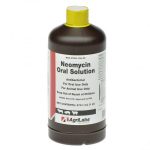
Neomycin sulfate is usually administered orally. In patients with hepatic encephalopathy who are unable to take oral medication, the drug has also been given as a retention enema.
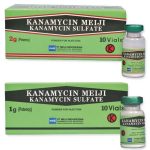
IM and IV dosage are identical and should be based on an estimate of ideal body weight. The manufacturers state that dosage by all routes of administration should not exceed 1.5 g daily. A causal relationship between maintenance of certain peak or trough serum concentrations or other pharmacodynamic endpoints and clinical response or toxicity has not been established to date for aminoglycoside dosing regimens. However, in general, desirable peak serum concentrations of kanamycin for systemic infections are 15-30 mcg/mL and trough concentrations of the drug should not exceed 5-10 mcg/mL.
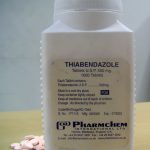
Thiabendazole is used for the treatment of a variety of nematode (roundworm) infections, including strongyloidiasis (threadworm infection), cutaneous larva migrans (creeping eruption), and toxocariasis (visceral larva migrans). Thiabendazole also is used during the invasive stage of trichinosis to alleviate symptoms (e.g., fever, tenderness, muscle pain); however, the effect of the drug on larvae which have migrated to the muscles has not been fully evaluated and not all patients respond to the recommended dosage.
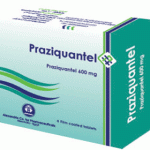
Praziquantel is used for the treatment of schistosomiasis (bilharziasis) caused by all Schistosoma species pathogenic to humans. The drug has been used effectively for the treatment of individual patients and in mass-treatment and control programs. Praziquantel is effective against all stages of Schistosoma infection including the acute phase and the chronic phase which may be associated with hepatosplenic involvement. The drug appears to be effective in the treatment of severe schistosomiasis (e.g., neuroschistosomiasis); however, to prevent substantial morbidity and long-term sequelae (e.g., paraplegia, persistent impotence) associated with this condition, therapy with praziquantel must be initiated promptly.

Mebendazole is used for the treatment of a variety of nematode (roundworm) infections, including trichuriasis (whipworm infection) caused by Trichuris trichiura, enterobiasis (pinworm infection) caused by Enterobius vermicularis, ascariasis (roundworm infection) caused by Ascaris lumbricoides, and hookworm infections caused by Ancylostoma duodenale, Necator americanus, or Ancylostoma caninum.
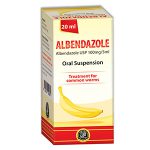
Albendazole is used in the treatment of tissue infections caused by the larval forms of certain cestodes (tapeworms) including neurocysticercosis caused by Cysticercus cellulosae, the larval form of Taenia solium (pork tapeworm). Albendazole also is used for the treatment of hydatid disease caused by the larval form of Echinococcus granulosus (dog tapeworm). Other anthelmintics (usually praziquantel) are used for the treatment of intestinal infections caused by adult forms of cestodes. Albendazole is used for the treatment of parenchymal neurocysticercosis resulting from active lesions caused by Cysticercus cellulosae, the larval form of Taenia solium (pork tapeworm), preferably in combination with corticosteroids.